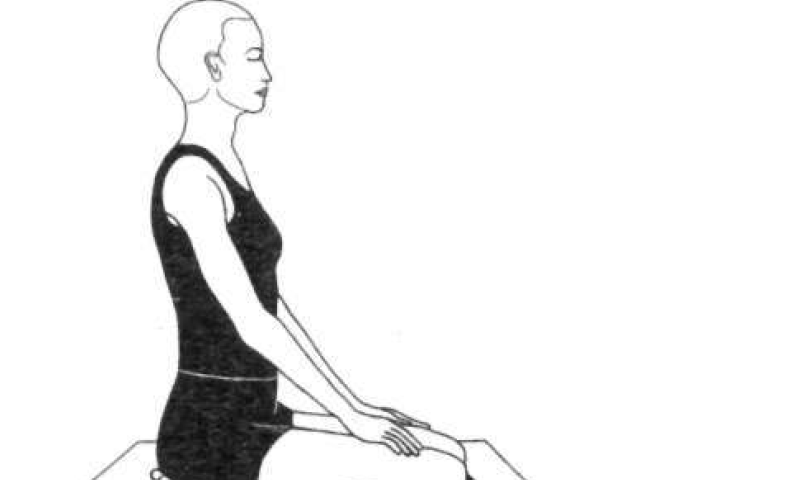Vajrasana (thunderbolt pose) 1

Simhasana (lion pose) 7
September 2, 2016
Ananda Madirasana (intoxicating bliss pose) 2
September 2, 2016Vajrasana (thunderbolt pose):-
Kneel on the floor.
Bring the big toes together and separate the heels.
Lower the buttocks onto the inside surface of the feet with the heels touching the sides of the hips.
Place the hands on the knees, palms down.
The back and head should be straight but not tense.
Avoid excessive backward arching of the spine.
Close the eyes, relax the arms and the whole body.
Breathe normally and fix the attention on the flow of air passing in and out of the nostrils.
Duration:
Practise vajrasana as much as possible, especially directly after meals, for at least 5 minutes to enhance the digestive function. In cases of acute digestive disorder, sit in vajrasana and practise abdominal breathing for 100 breaths before and after food.
Awareness:
Physical – on the normal breathing process. This will bring tranquillity to the mind if practised with the eyes closed.
Spiritual – on manipura chakra.
Benefits:
Vajrasana alters the flow of blood and nervous impulses in the pelvic region and strengthens the pelvic muscles. It is a preventative measure against hernia and also helps to relieve piles. It increases the efficiency of the entire digestive system, relieving stomach ailments such as hyperacidity and peptic ulcer. It reduces the blood flow to the genitals and massages the nerve fibres which feed them, making it useful in the treatment of dilated testicles and hydrocele in men. It assists women in labour and helps alleviate menstrual disorders.
Vajrasana is a very important meditation posture because the body becomes upright and straight with no effort. It is the best meditation asana for people suffering from sciatica and sacral infections. It stimulates the vajra nadi, activates prana in sushumna and redirects sexual energy to the brain for spiritual purposes.
Practice note:
If there is pain in the thighs, the knees may be separated slightly while maintaining the posture.
Beginners may find that their ankles ache after a short time in vajrasana. To remedy this, release the posture, sit with the legs stretched forward and shake the feet vigorously one after the other until the stiffness disappears.
Then resume the posture. A folded blanket or small cushion may be placed between the buttocks and the heels for added comfort.
Note:
Vajrasana is used by Muslims and Zen Buddhists as a position for prayer and meditation. People who cannot perform padmasana or siddhasana, or find them uncomfortable, may sit in vajrasana for meditation practice.
Variation I:
Check the flow of breath through the nostrils. If the air flow through the left nostril is predominant, then
place the left big toe on top of the right big toe; if the right flow is predominant, place the right big toe on top.
Sit in vajrasana as described.
This will help to balance the flow of the breath in the left and right nostrils, which are related to ida and pingala nadis, and thereby tranquillise the mind.
Variation 2:
Separate the feet (not the knees) so that the big toes are about 25cm apart.
Sit in vajrasana with the buttocks flat on the floor. This stimulates mooladhara chakra.
Variation 3:
Place a rolled up blanket on the floor between the
Place a rolled up blanket on the floor between the legs. Separate the feet (not the knees) about 25cm.
Sit on the blanket in vajrasana.
This variation is easier and is suitable for beginners as it takes the pressure off the feet and ankles. It also stimulates mooladhara chakra.



